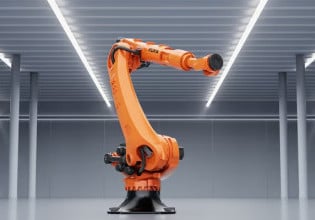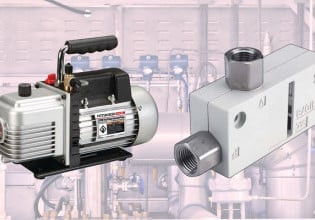Dold Develops SSR for Precise Control of Variable AC Loads
Dold now offers a solid state relay (SSR) capable of burst firing mode for controlling electric heaters and infrared lamps.
Dold has developed a solid state relay (SSR) designed to improve the efficiency and the accuracy of heating cycles. Instead of the continuous battle against overheating and underheating found in simple “bang-bang” control loops, the Dold PK9260/_4_ rapidly switches between states to produce a variable signal that can be used to keep the temperature of an environment constant. This saves energy, as well as wear and tear on heating equipment, as electric heaters wear out much more quickly if they fully cycle between on and off states.

Dold PK 9260/_4_ Series SSR. Image used courtesy of Dold
Relays for Temperature Control
Relays are either opened or closed, meaning they are allowing current to flow through them or not. While this makes them an excellent choice for switching mechanisms, they can be challenged by situations where the current needs to flow in a more variable fashion. Instead of an ON/OFF switch, sometimes there is a need for current to flow in varying amounts. It is the difference between using a gate valve to control the flow of water through a pipe, versus breaking a dam and rebuilding it.
One application that requires variable current is precise temperature control. The temperature of the environment is compared to a set point, and the error signal between these two is used in a feedback loop. A simple relay would close, allowing the full flow of current, should the temperature be below the set point. The temperature would rise, causing the feedback loop to open the relay. However, there is thermal inertia, so the environment will likely overshoot the setpoint, and then slowly cool again.
Ultimately, a plot of temperature would show a sinusoid or triangular wave near the setpoint, but bouncing over and under it. For most applications, this is undesirable.
Burst Mode for AC
The challenge, which Dold has solved, is to make an ON/OFF switch behave more like a control knob. The reality is that the relay still only has two states, ON and OFF, but if it is switched rapidly enough, it can approximate a continuous signal at lower output. Imagine switching a light switch on and off rapidly enough that the light in the room is halfway between on and off- that is how this relay works.
Unlike DC voltages, which can make use of PWM, controlling AC outputs is more tricky because the magnitude of the waveform dictates the on-and-off times, rather than a clock frequency. These devices have long used TRIAC devices, and the same concept has been applied to a solid-state relay.
The PK9260/_4_ SSR
Unlike mechanical relays, the SSR has no moving parts or contact surfaces to wear out. This means the rapid switching will not reduce the lifetime of the relay. It is also a sealed package, meaning no dust, moisture, or environmental hazards will damage it, making it suitable for the most rugged of industrial environments.
The relay itself uses a standard 4-20 mA control signal. Depending on the specific model, the output signal can source 10 A up to 50 A or 24 V up to 480 V. Between the three models, numerous heating devices can be controlled using this SSR.
Variable Control for Relays
There are numerous occasions where heating and lighting applications require some signal in between ON and OFF states. However, cycling from fully ON to fully OFF can cause components to fail due to thermal stresses. With the rapid cycling made available through this SSR, the heating components never fully cool off, reducing the cyclic thermal stresses and extending the lives of these heaters. This is a bonus to the more precise temperature control made available with these relays.
Overall, applications that require precise temperature control, such as heat treating, epoxy curing, and many other operations will benefit from the Dold PK9260/_4_ relays.






